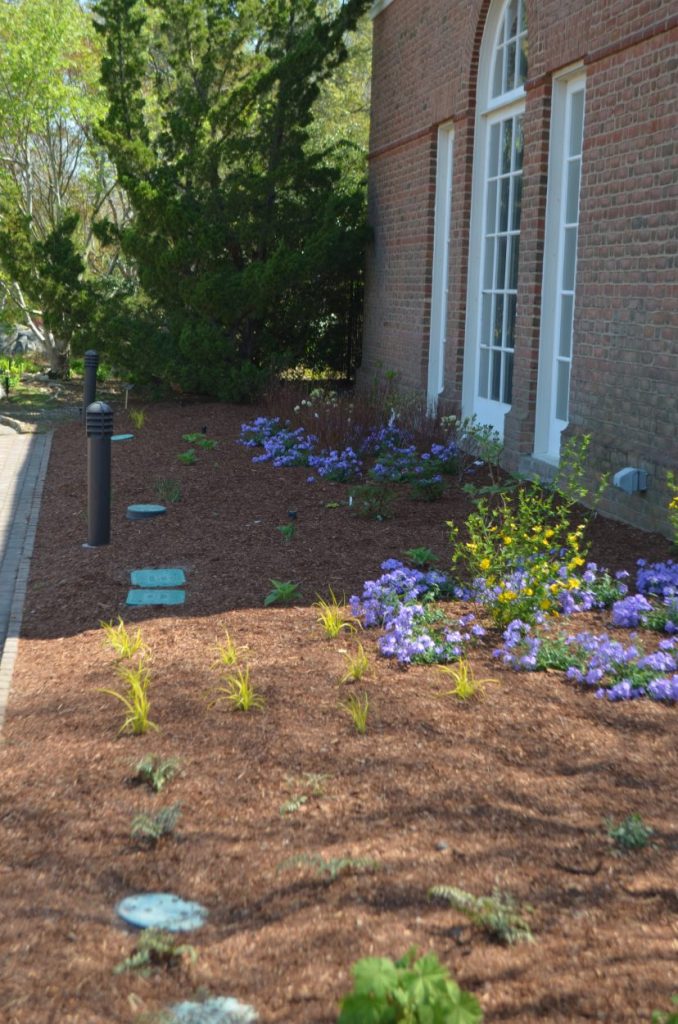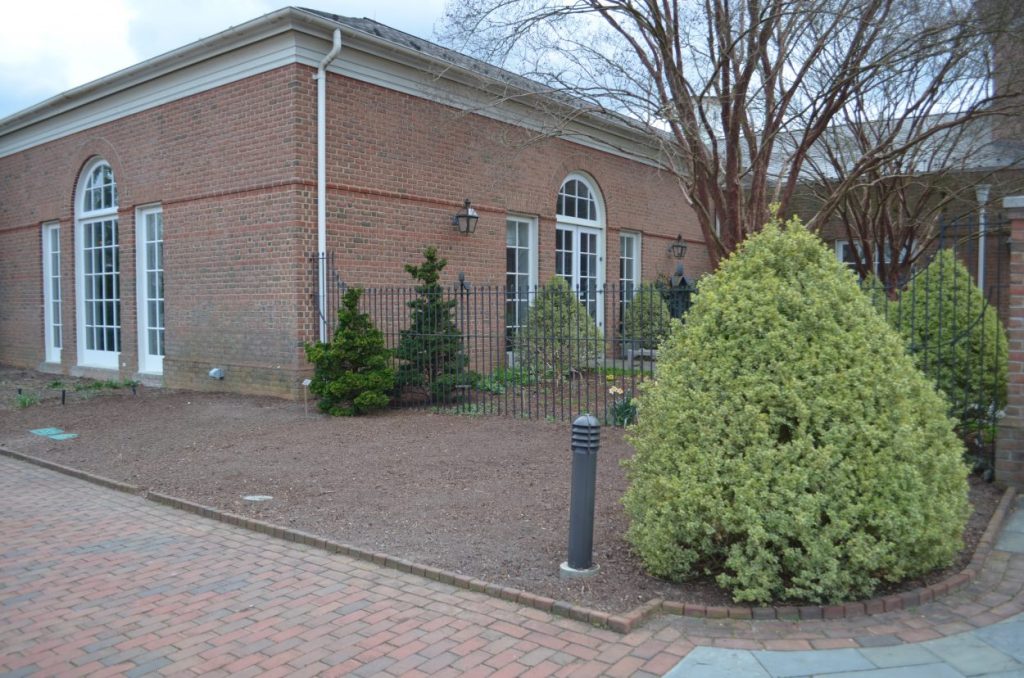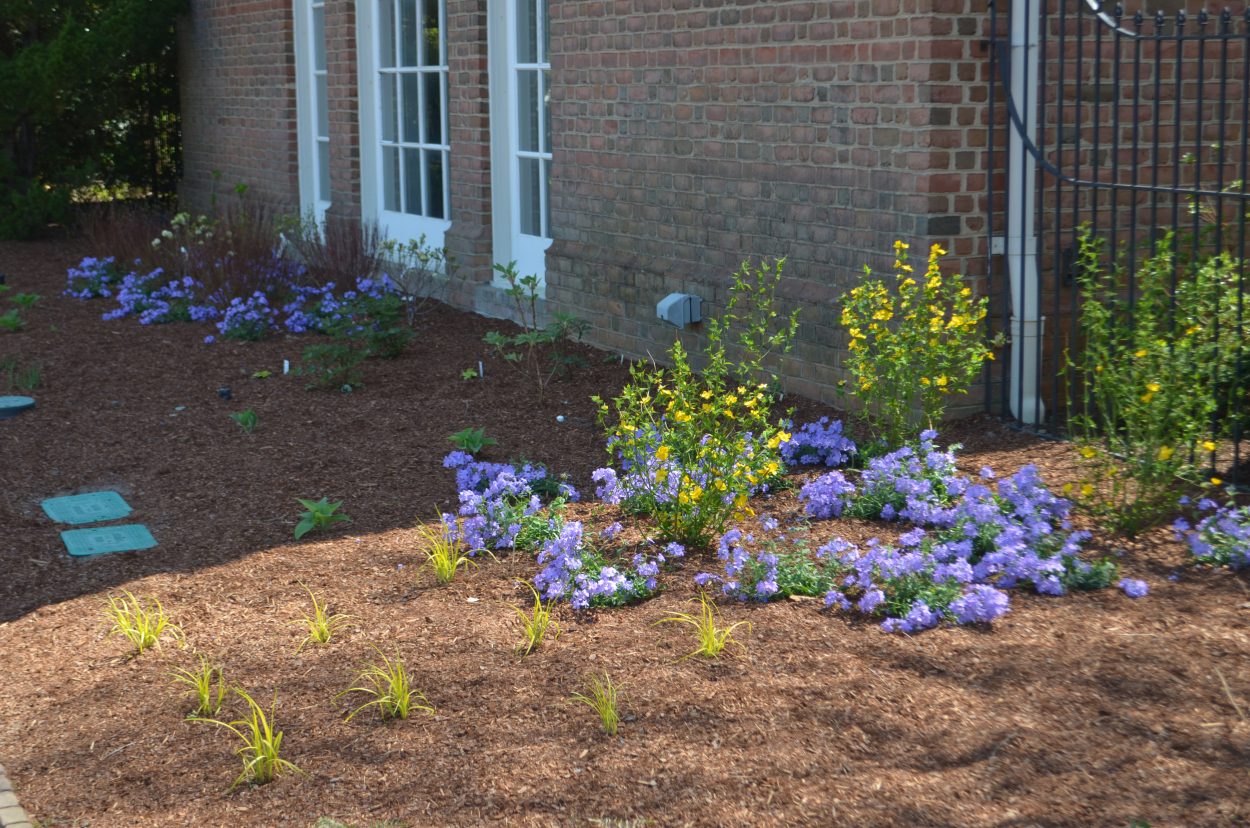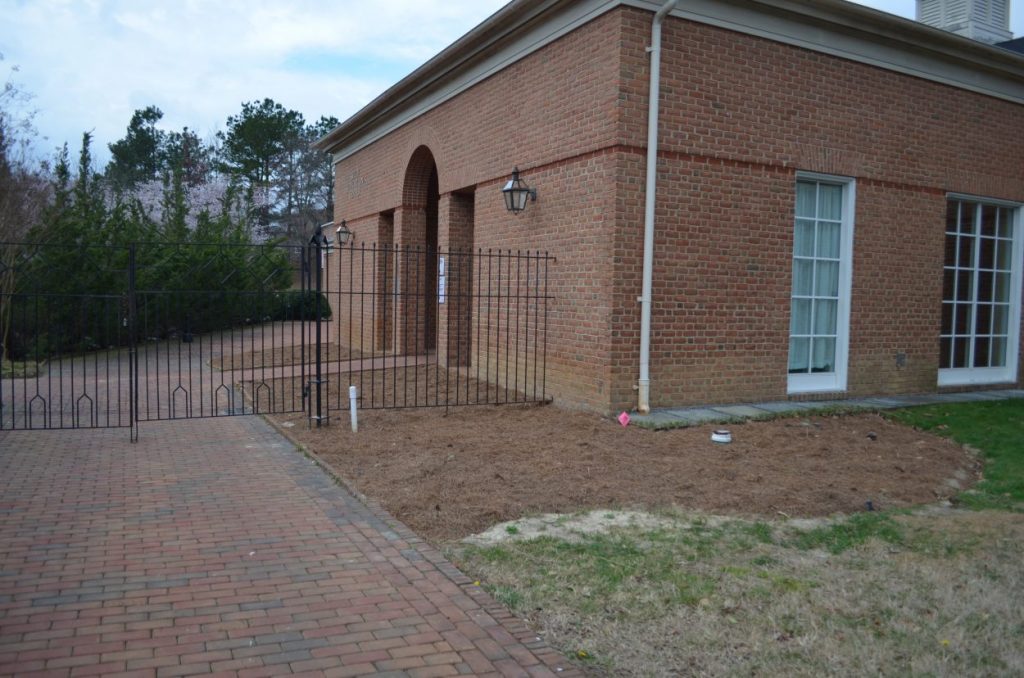Spring Garden Renovations
Spring is here and seems like the perfect time to tell you about some garden renovations taking place at Lewis Ginter Botanical Garden. We got swept up in spring cleaning and have cleared out two plant beds near the North Terrace. The fun part is seeing what comes next, keep reading!
The plant bed, located outside of the Garden Cafe, near the path towards the Asian Valley Garden, previously contained sun-loving plants. The bed is located next to a north facing wall, which means those plants get fewer hours of direct sunlight. As the surrounding trees have matured and more shade has accumulated, these plants started to struggle. Horticulturist Dean Deitrich designed a new plan for the bed that focuses on part-sun/part-shade plants. The Robins Visitor Center plant bed now contains 14 different types of plants that will be able to thrive in moderate shade. The plants filling the bed now will reach their full maturity in about three years.
Here’s the Plant list:
- Smooth Hydrangea (Hydrangea arborescens) ‘Wee White’
- Bottle-brush Plant (Fothergilla gardenii)
- Sedge (Carex elata) ‘Bowles Golden’
- Hairy Alumroot (Heuchera villosa) ‘Autumn Bride’
- Dixie Wood Fern (Dryopteris x australis)
- Oak Leaf Hydrangea (Hydrangea quercifolia) ‘Ruby Slippers’
- Japanese kerria (Kerria japonica) ‘Golden Guinea’
- Windflower (Anemone x hybrida) ‘Pretty Lady Diana’
- Cranesbill (Geranium x) ‘Rozanne’
- Japanese Spikenard (Aralia cordata) ‘Sun King’
- Ostrich Fern (Matteuccia struthiopteris)
- Hosta (Hosta) ‘Blue Umbrellas’, ‘Big Daddy’
- Hairy Alumroot (Heuchera) ‘Frosted Violet’
- Phlox divaricate ‘Blue Moon’
- Siberian Iris (Iris) ‘Butter and Sugar’
 “There wasn’t a particular focus on native plants, but the bed ended up containing over half natives,” said Deitrich. He designed the bed to be easy to maintain, which is great for homeowners to find inspiration and try out these plants in their own shady garden spots. Deitrich used a beautiful layering of flowering Japanese rose, a bright yellow flower that blooms in the spring, paired with a purple Woodland Foxglove that blooms in unison. Down the road, he says he plans to add in more bulbs and groundcover layers to bring new excitement and interest to each season.
“There wasn’t a particular focus on native plants, but the bed ended up containing over half natives,” said Deitrich. He designed the bed to be easy to maintain, which is great for homeowners to find inspiration and try out these plants in their own shady garden spots. Deitrich used a beautiful layering of flowering Japanese rose, a bright yellow flower that blooms in the spring, paired with a purple Woodland Foxglove that blooms in unison. Down the road, he says he plans to add in more bulbs and groundcover layers to bring new excitement and interest to each season.
Another plant bed renovation is also beginning to take form outside the entrance to the Kelly Education Center. The KEC bed was previously occupied by liriope, a non-native, invasive plant. Because of the location of this bed, it receives more sun than other areas of the Garden. Dietrich wanted to pull out the liriope and take advantage of this space’s abundant sunlight focusing on neaa Zone 8 planting that can withstand our winter weather. This location creates a microclimate and stays warmer through the winter then the rest of the garden. We’re looking forward to seeing what he will choose. Look on our Facebook page for additional updates.


